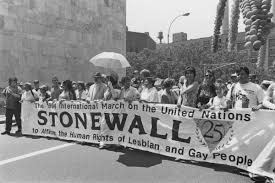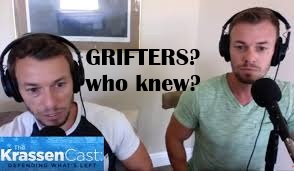This ain’t your bachelor uncle’s Stonewall, honey.
In recent years, the lesbian, gay, bisexual, and transgender (LGBT) communities have been united under a shared banner of acceptance and equality. Trouble is, gay men and trans people have pretty much nothing in common — or at least not enough for gay men to die on an imaginary hill predicated by a strange kind of Stockholm Syndrome, wherein being gay has become a prisoner of the trans values that have co-opted its legacy.

Bolstered by a not-well-meaning media, the alliance of GAY and TRANS is fake. It’s a kinship that has existed only in the minds of trans activists who need to populate their party with more bodies. Unfortunately, a lot of gay men fall for this ruse because it’s a left-leaning path in the woods. It’s decorated like a friend.
Woe, however, to the gay trans ally who slips up once, or uses the wrong pronoun or disagrees with anything trans. When the trans community comes for thee, it’s not not on little cat feet. It’s a ferocious tiger, backed by a whole lot of mindless straight, white women and maniacal media types.
As the distinct experiences and challenges of each group come into sharper focus, a solemn reflection is warranted.
For gay men, the growing association with the transgender community—particularly in light of its unique struggles with violence and divergent values—may no longer align with the spirit of their historical identity and journey.
This divergence calls for a deliberate distancing, not out of animosity, but out of a need to preserve the integrity of a legacy built on resilience, self-acceptance, and community. The gay male identity has evolved through decades of struggle, marked by the fight for recognition of same-sex relationships and the reclamation of dignity in the face of societal rejection.
According to a 2024 Pew Research Center survey, the median age at which gay men first recognize their sexual orientation is 12, with a realization of their identity solidifying by 17. This developmental milestone often leads to a coming-out process that, while challenging, has historically strengthened bonds within gay communities, fostering a sense of belonging and continuity.
Social psychologist Dr. Ritch C. Savin-Williams, in his work on gay identity development, emphasizes that this process is rooted in psychological stages of self-esteem and positive distinctiveness, where gay men construct an identity that celebrates their inherent orientation rather than seeking to alter it.
In contrast, the transgender experience, while equally valid, follows a different trajectory. The same Pew survey notes that transgender adults often perceive less commonality with gay men, with issues like same-sex marriage—central to gay advocacy—being less relevant to their priorities. This divergence is compounded by stark statistical realities.
A 2022 study from the Williams Institute at UCLA found that transgender individuals – a disproportionate amount of which are sex workers – are over four times more likely than cisgender people to experience violent victimization, with rates of 86.1 and 107.5 per 1,000 for transgender women and men, respectively, compared to 23.7 and 19.8 for cisgender women and men.
One in four transgender women who are victimized believe the incident was a hate crime, a figure far higher than for cisgender counterparts. This pervasive violence, often linked to societal rejection of gender transition, introduces a dynamic of trauma that differs significantly from the historical narrative of gay men, who have increasingly seen societal acceptance rise to 92% among LGBT adults, per Pew.
This violence, while not reflective of transgender individuals themselves, creates an association that can overshadow the gay male identity. Dr. Ilan H. Meyer, a leading researcher at the Williams Institute, has noted that victimization correlates with diminished well-being, including increased suicide ideation. For gay men, whose community has worked to move beyond such associations toward a narrative of pride and stability—evidenced by lower rates of violent victimization and higher rates of legal marriage (per Pew)—this linkage risks diluting their progress.
The spirit of the gay man, forged through cultural contributions like the arts and advocacy for consensual love, stands in quiet contrast to a narrative dominated by physical and material loss. Moreover, the values underpinning these identities diverge in ways that merit consideration.
The Pew Research Center’s 2025 report on gender identity reveals a partisan and philosophical split: 76% of Democrats see significant discrimination against transgender people, while only 35% of Republicans agree, reflecting a broader cultural debate. For gay men, whose fight has been anchored in the biological reality of same-sex attraction, the transgender emphasis on gender as fluid or distinct from sex assigned at birth—supported by 80% of those who accept this view, per Pew—may feel misaligned.
Dr. Savin-Williams argues that identity process theory suggests individuals seek continuity and self-efficacy; for gay men, this continuity is tied to accepting their natal sex, whereas transgender identity often involves a redefinition that can feel foreign to this framework.
This is not a call to sever all ties or dismiss the transgender struggle. Rather, it is a recognition that the gay male community may need to carve its own path, preserving a legacy that honors its unique history. The data suggests that the violence and value differences are not representative of the gay spirit—a spirit of love, resilience, and self-acceptance. By distancing themselves, gay men can protect their narrative, ensuring it remains a beacon of hope rather than a mirror to challenges that, while real, do not define their journey. This separation, undertaken with respect and introspection, allows each community to thrive on its own terms, honoring the diverse tapestry of human experience.



